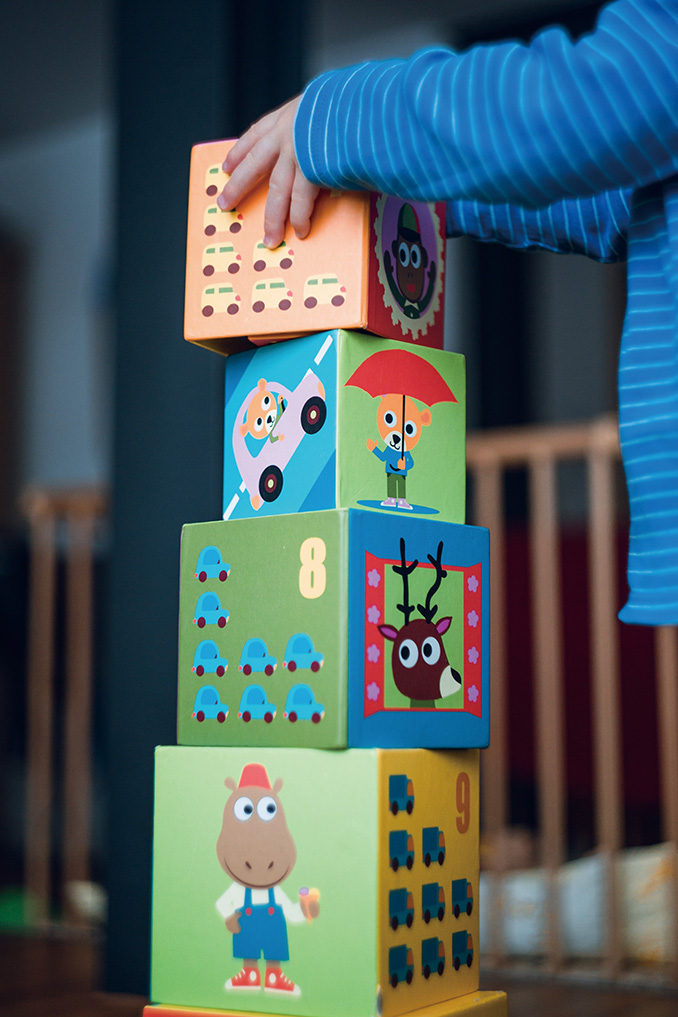
孩子的身心健康牵动着家长的心。为此,菁kids上海特开设“心理咨询室”专栏,邀请心理专家答疑解惑。第一期,我们有请到Dr. KC Lee,请他来聊聊“怎样让孩子与‘特别的人’相处”这个问题。
如果你也有心理方面的困惑,欢迎发送邮件至editorsh@jingkids.com,我们将选择典型问题并邀请专家在下期栏目中解答。请在邮件主题中注明“心理咨询室”。
文 | Dr. KC Lee 译 | 刘慕洁 图 | Unsplash
Q:孩子班上有需要特殊支持的同学(如患有多动症、自闭症等),他们的某些行为看起来有些“奇怪”,比如大家都在做操、排练,他却可以不参加;人际交往不符合通常的法则,一言不合就会流露出暴力倾向,等等。
当孩子问起这些同学为什么这么特殊时,家长该怎么回答?怎么让孩子与他们更好地相处?
A:虽然我们感知到的世界是有序和统一的,但现实世界远非如此。不同的动物和植物被驯化,这造成了就像我们在超市里看到的假象:一切事物看上去都是一样的。如果我们花些时间探索自然,就会发现所有事物在自然秩序中都是不同的。大海里的鱼大小各异,颜色多样,同一窝小猫也有不同的毛色,甚至同一棵树上的水果也会有不同的形状和斑点——这就是差异。
父母可以利用自然界中的例子来做个巧妙的对比,向孩子解释不是每个人都有相同的外表和行为,也不是每个人都有和自己一样的能力。多样性对于人类社会和地球的自然性都至关重要。当孩子们融入并参与到社区的复杂社会结构中时,他们很快会发现不同的个性(有些孩子更健谈,有些孩子更保守),不同的兴趣(有些孩子喜欢绘画,有些喜欢数学),不同的天赋和能力(有些孩子非常擅长国际象棋,而有的擅长运动——这些都可以改变并取决于具体情况),也许还会接触到不同的肤色和国籍。还有一些小朋友可能因为间接因素面临未曾遇到的挑战(车祸,出生缺陷或各种儿童疾病)。 父母可以利用这一点介绍什么是多样性,以及其他更广泛和重要的主题,如尊重、残疾、道德、善良、公平、全力以赴、团队合作、帮助他人。
这也可以成为一个机会——一个让家长教孩子看事物不要只看表面:第一印象可能不是最好的,因为我们的某些行为是由家庭环境、社会环境和外部资源等间接因素影响的。
心情糟糕、脾气暴躁的男孩可能已经努力表达自己,但是他感受的情绪比其他人更强烈。
带着奇怪的手臂绷带或拄着拐杖的女孩可能正在从一次创伤性车祸中逐渐恢复,现在感到紧张,容易受到惊吓。
带有奇怪口音的插班生可能的确很难过,因为他刚刚和最好的朋友告别,而现在他的朋友远在千里之外。
不肯安静坐着的女孩可能真的热爱体育活动,她想要一整天都玩耍。
……
然而,在这一切之下,是一个鲜活的生命,有着感情、兴趣和独特的个性。 他们也需要滋养、接纳和温暖,以及和善的人际关系。 家长可以借此机会向孩子介绍善良、耐心、信任和社会创造力。想象一下,如果每个人都做了完全相同的事情,我们只会看起来像克隆人一样!
事实上,多样性有时实际上给了我们优势(许多突破性的想法和创新就源自不寻常和不循规蹈矩的头脑 ,例如我们如今如此依赖的智能手机源自技术“怪咖”打破常规的想法)。毕加索、达芬奇、杰克逊·波拉德都以非传统方式绘画,从而创造出充满活力的让人印象深刻的美术作品,这些作品在今天被我们称之为艺术。
然而,有一点也很重要,那就是提醒你的孩子界限和规则,要教他们区分不同性和破坏性。作为一个机构,学校需要一定的时间表和规则,以便顺利运作, 并非所有“不同”在任何时候都可以被容忍,尤其是涉及人身安全方面。 教你的孩子区分什么游戏是可接受的和什么是有危险的,这一点至关重要。 当遇到麻烦时,孩子们也应该知道他们可以在哪里寻求帮助。
作为父母,你要指引和教导你的孩子一生。当孩子遇到以不同方式进行社交活动的人时,这可能是一个很好的学习机会,让你的孩子适应不同类型的人。每个人的友谊和社交的方式可能与他们习惯的方式不同,学习建立新的友谊,协商和解决与各种各样的人的争端,这可能成为孩子未来的社会资产。虽然不是每一次尝试都会成功,但鼓励他们尝试不同的方式来建立新的友谊,协商和接受,这可能是你教给孩子的最好一堂课之一。

Q: My child just started school and it is his first experience interacting with special needs children (disabled, ADHD, dyslexic, autistic, etc). These children appears ‘weird’ to him, like when everyone attends P.E. or other practice they are allowed not to join in, or having unusual social interactions or exchanges. Sometimes these children could also get temperamental or physical when things are not right for them.
When my child asks me why are these special needs children ‘special,’ how should I respond? What would help them get along well?
While we would like to perceive the world as orderly and uniformed, the real world is far from that. Domestication of various animal and plant species created a myopic view of what we see in supermarkets: everything looks the same. Those of us that have spent anytime at all in nature would realise there are many variations to everything in natural order. Fish from the sea come in a variety of sizes and colours, the same litter of kittens have a range of fur patterns, even fruits from the same tree have the occasional random shapes and patches that are off coloured compared to the rest.
Parents might utilize examples in nature to be a lovely comparison in explaining to their children not everyone looks, behaves, or has the same abilities as they do. Diversity is an essential component in human societies, and essential to what is natural of our planet. As children mingle and join the complex social fabric of a community, they soon discover that there are different personalities (some children are more chatty, while others are more reserved), different interests (some like drawing, others like mathematics), varying talents and abilities (some are really good at chess, while others, athletics -all changeable and dependent on situation), and perhaps different skin colours and nationalities. Circumstantial factors can introduce challenges that children may not have encountered personally (car accidents, birth defects, or various childhood disorders). At this point, parents could capitalize this and introduce what is diversity, along with other wider and important topics such as respect, disability, ethics, kindness, fairness, performing within our best capabilities, teamwork, and supporting others.
This can also be a space for parents to teach their children to look beyond the surface: That first impressions may not be the best representations, and that there are circumstantial factors to behaviours that may at first seem unusual.
The boy with the foul mood and bad temper could be struggling to express himself appropriately because he experiences him emotions far more intensely than others.
The girl with the strange arm band or crutches could be recovering from a traumatic car accident and is now feeling jittery and easily startled.
The new boy joining the class with a strange accent could be really sad because he just said good bye to his best friend who is now miles away.
The girl that just wouldn’t sit still is someone that really loves physical activities and wants to play all day.
Yet underneath all that is a living, breathing person that has feelings, interests, and a unique personality. That they too need nourishment, acceptance, and warm, gentle human connections. Parents could use this opportunity to introduce kindness, patience, trust and social creativity to their children. Imagine if everyone did everything exactly the same, we would all just look and behave like clones!
In fact, diversity sometimes actually gives us an edge (many ground breaking ideas and innovations came from unusual and nonconforming minds – the smart phones and computers that we so heavily depend on came from technological ‘geeks’ that truly thought out of the box). Picasso, Da Vinci, Jackson Pollard all painted unconventionally, thus creating the vibrant and lavish aesthetics that we call art today. If not anything useful, sometimes it is just plain old good fun (have you met a kid that could curl their tongue 3 ways?). Imagine if everyone in class all likes the same thing, does the exact same activity, to the exact same ability, that probably wouldn’t make school much fun would it?
However, it is also important to remind your child of boundaries and discipline. Teaching them to differentiate being different, and being disruptive. As an institution, school requires certain schedules and confines in order to operate smoothly. Not all ‘variations’ can be tolerated at all times, especially when it comes to personal safety. Teaching your child what is acceptable ‘play’ and what constitutes as ‘harm’ is essential. Children should also learn where they can seek support and assistance when things are not going well for them.
As parents, you guide and coach your child through life. When they meet individuals that socialise differently, this can be a great learning opportunity for your child to adapt to different types of people, that each person’s version of friendliness and social interaction can vary from the format that they are accustomed to. Learning to establish new friendships, negotiate play and resolve disputes with a wide range of personalities can be a great social asset for many years to come. While not every attempt will be successful, encouraging them to try different ways to establish new friendships, negotiating boundaries, and being accepting can be one of the greatest lessons you teach your child.
Dr. KC Lee
Dr. KC Lee是英国特许心理学家,也是一名心理教练。他在伦敦取得了咨询心理学博士学位,并拥有新加坡专业咨询社会科学硕士学位和伦敦心理学硕士学位。 Dr. KC Lee拥有12年的临床经验,曾在英国国家医疗服务系统(NHS, National Health Service)、新加坡航空公司、百汇医疗集团(中国)工作,并在新加坡经营自己的私人心理诊所。 他在帮助面临学业、家庭和关系等问题的父母和孩子方面经验丰富。
-End-
菁kids 2019 5-6月刊 《自然教育,从现在出发》更多菁彩内容:
|编者按|
|封面故事|
幼儿园孩子的种子探究课
自然教育实践者说
|父母社区|
|心理咨询室|
教导孩子怎样与“特别的人”相处
|话题|
国际化学校的视觉艺术教育
A Level选艺术是一种怎样的体验?
|特别报道|
观化启蒙园:以爱创设孩子们的第二个家
闵行晓苗:上海IB PYP候选幼儿园性价比之选
|父子说|
|在读|
家庭教养VS. 同辈群体,谁塑造了你的孩子?
|看世界|
|校园笔记|
|未来艺术家|

本文原载菁kids 5-6月刊《自然教育,从现在出发》,印刷版于2019年6月出版发行,扫描下方二维码,可进入TRM SHOP订阅。


Leave a Reply